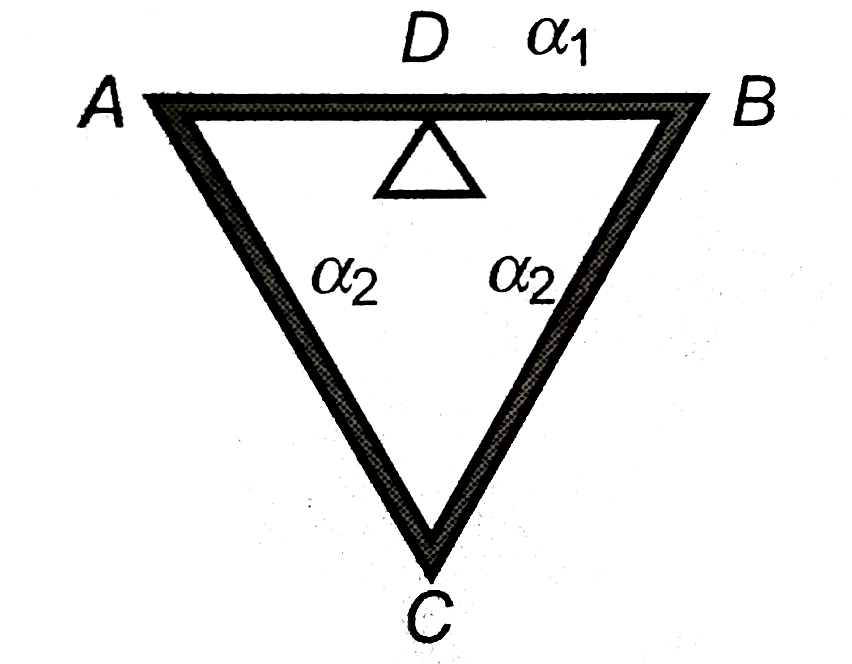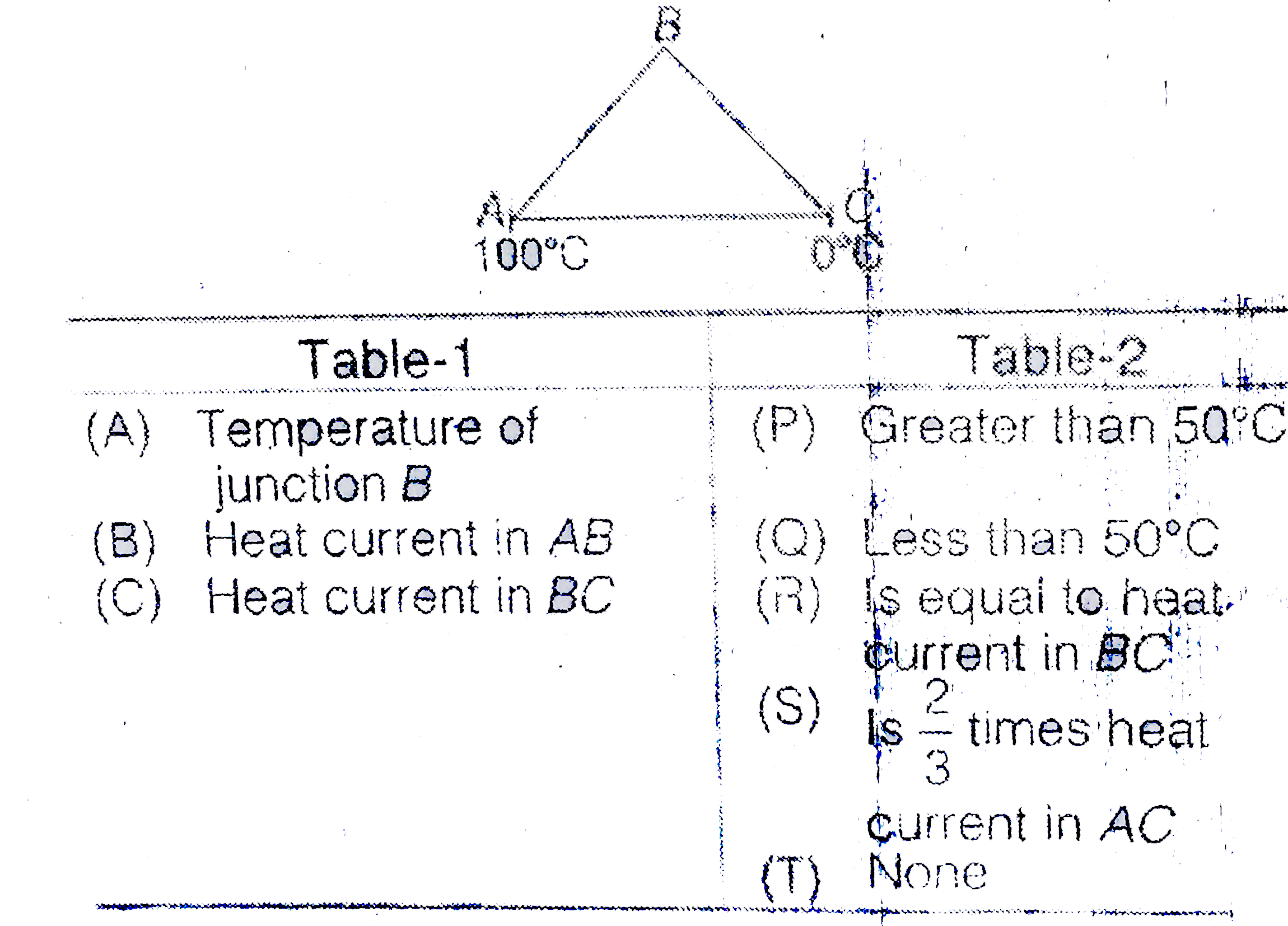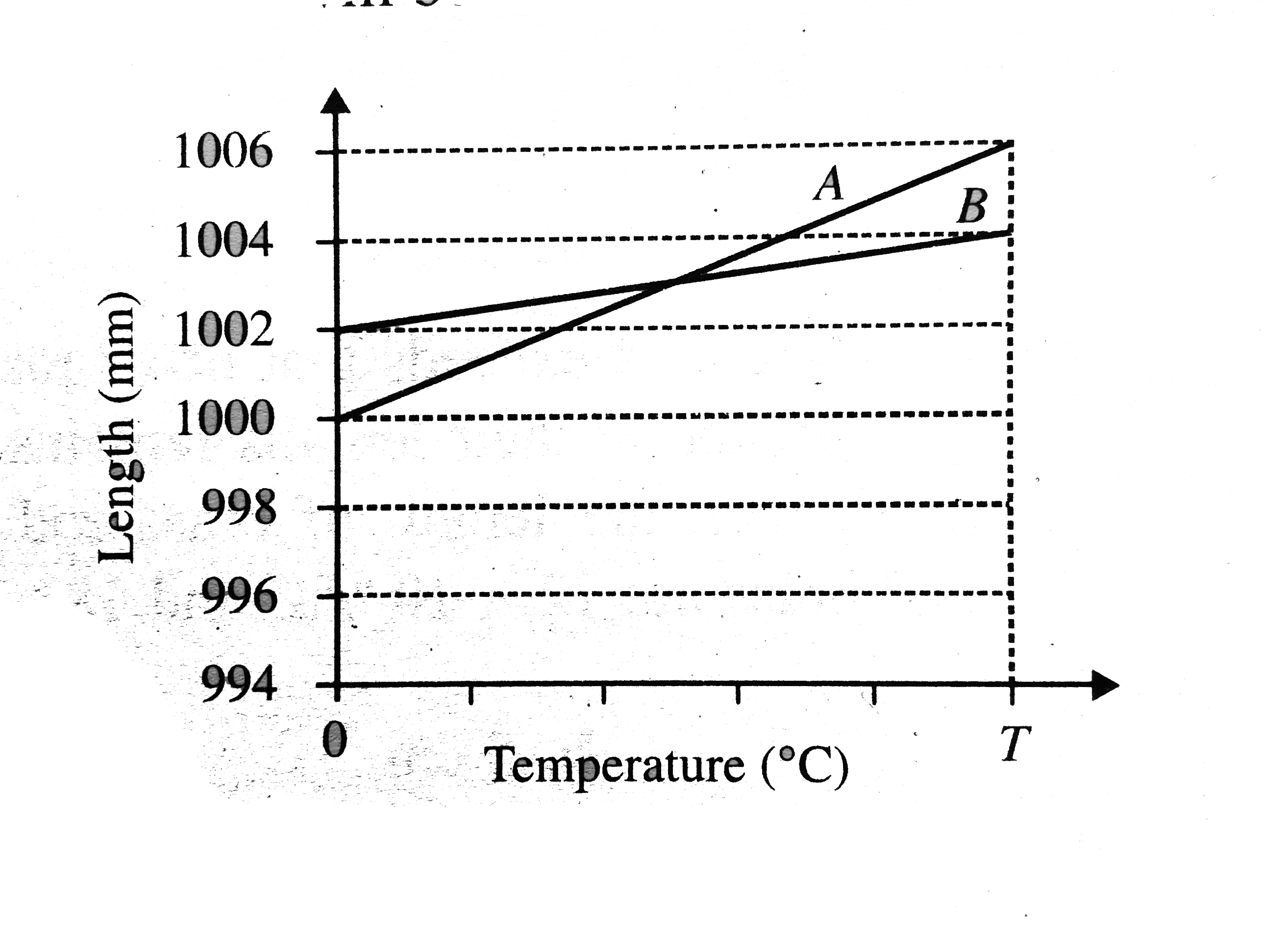Three rods of equal length at 0∘C, are connected with one another to form an equilateral triangle ABC [Fig. 5.10]. Coefficient of linear expansion for the rod AB is α and that for the other two rods is β. What will be the increment in the measure of the angle at C if the triangle is heated to t∘C?
At 0∘C,∠C=60∘=π3.
Suppose due to rise in temperature to t∘C,∠C=2ϕ where ϕ=π6+θ (assuming that ∠C has increased by 2θ,θ is very small)
If l is the length of each rod at 0∘C, then at t∘C the lengths of AC and BC become l(l+βt) and the length of AD becomes 12(1+αt). So for ΔACD in Fig. 5.10,
l/2(1+αt)sinϕ=l(1+βt)sin90∘
or, sinϕ=l/2(1+αt)l(1+βt)
or, sin(π6+θ)=1+αt2(1+βt)
or, sinπ6cosθ+cosπ6sinθ=1+αt2(1+βt)
or, 12cosθ+√32sinθ=12(1+αt1+βt)
or, 12+√32⋅θ=12(1+αt1+βt)
[∴θ is small, sinθ=θ,cosθ=1]
or, √32θ=12(1+αt1+βt−1)
or, θ=1√3(1+αt−1−βt1+βt)=(α−β)t√3(1+βt)
∴ Increases in ∠C is 2θ=2(α−β)t√3(1+βt).

Topper's Solved these Questions
- EXPANSION OF SOLIDS AND LIQUIDSBook:CHHAYA PUBLICATIONChapter:EXPANSION OF SOLIDS AND LIQUIDSExercise:SECTION RELATED QUESTIONS
Explore 6 Videos
- EXPANSION OF SOLIDS AND LIQUIDSBook:CHHAYA PUBLICATIONChapter:EXPANSION OF SOLIDS AND LIQUIDSExercise:HIGHGER ORDER THINKING SKILL (HOTS) QUESTIONS
Explore 31 Videos
- EXPANSION OF GASESBook:CHHAYA PUBLICATIONChapter:EXPANSION OF GASESExercise:CBSE Scanner
Explore 1 Video
- FIRST AND SECOND LAW OF THERMODYNAMICSBook:CHHAYA PUBLICATIONChapter:FIRST AND SECOND LAW OF THERMODYNAMICSExercise:CBSE SCANNER
Explore 18 Videos
Similar Questions
Three rods of equal of length are joined to from an equilateral triangle ABC. D is the midpoint of AB. The coefficient of linear expansion is α1 for AB and α2 for AC and BC . If the distance DC remains constant for small changes in temperature,

View SolutionThree rods of equal length of same material are joined to form an equilateral triangle ABC as shown in figure. Area of cross-section of rod AB is S, of rod BC is 2S and that of AC is S. Then match the following.

View Solution
Knowledge Check
Three rods of equal of length are joined to from an equilateral triangle ABC. D is the midpoint of AB. The coefficient of linear expansion is α1 for AB and α2 for AC and BC . If the distance DC remains constant for small changes in temperature,
 Aα1=α2Bα1=2α2Cα1=4α2Dα1=1/2α2
Aα1=α2Bα1=2α2Cα1=4α2Dα1=1/2α2
The variation of length of two metal rods A and B with change in temperature is shown in Fig. the coefficient of linear expansion αA for the metal A and the temperature T will beAαA=3×10−6/∘C,500∘CBαA=3×10−6/∘C,222.22∘CCαA=27×10−6/∘C,500∘CDαA=27×10−6/∘C,222.22∘CA metal rof having coefficient of linear expansion α and Young's modulus Y is heated to raise its temperature by Δθ. The stress exerted by the rod is
AYαΔθBYΔθαCYαΔθDαΔθY
Three rods of equal length of same material are joined to form an equilateral triangle ABC as shown in figure. Area of cross-section of rod AB is S, of rod BC is 2S and that of AC is S. Then match the following.

View Solution
The variation of length of two metal rods A and B with change in temperature is shown in Fig. the coefficient of linear expansion αA for the metal A and the temperature T will be
View SolutionThree rods A,B and C having indentical shape and size, are hingerd together at ends to form an equilateral triangle. Rods A and B are made of same material having coefficient of linea thermal expansion α1 while that of material of rod C is α2. By how many kelvin should the system of rods be heated to increase the angle opposite to rod C by Δθ.
View SolutionWhen a metal rod is heated through 30∘C the thermal strain in the rod is 3.6×10−4 .what is the coefficient of linear expansion of the metal ?
View SolutionA metal rod having coefficient of linear expansion (α) and Young's modulus (Y) is heated to raise the temperature by Δθ. The stress exerted by the rod
View Solution
